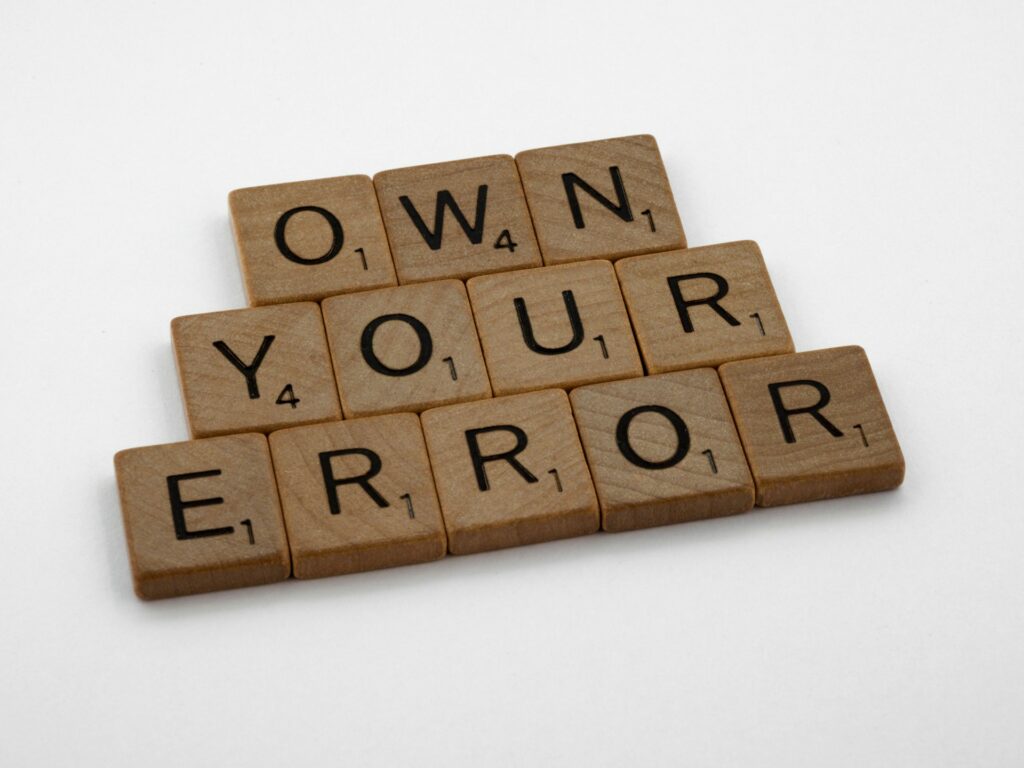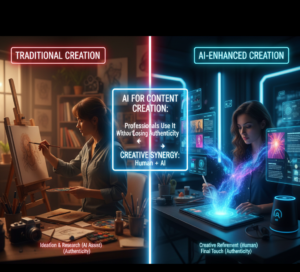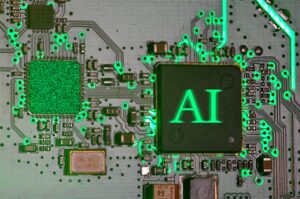Self-Correction in Artificial Intelligence: How Models Are Learning to Identify Their Own Errors

Self-Correction in Artificial Intelligence: How Models Are Learning to Identify Their Own Errors
Artificial intelligence (AI) systems have progressed to the point where they are no longer limited to simple pattern recognition or logic based on rules. Modern models, particularly large language models (LLMs), are now able to self-correct, which is a developing skill in which they are able to evaluate, detect, and improve their own outputs without the need for direct involvement from humans. This new invention is a significant step toward the creation of artificial intelligence systems that are more self-sufficient and dependable, and that are able to think, reflect, and correct their errors in real time.
The Importance of Artificial Intelligence Models That Can Correct Themselves
Traditional artificial intelligence systems are frequently fragile; once they make a mistake, they do not possess the awareness or processes necessary to correct it. When it comes to industries such as healthcare, banking, or autonomous driving, such rigidity might result in repercussions that are extremely high-stakes. This constraint is something that self-correcting artificial intelligence tries to overcome by incorporating techniques of reflection and verification directly into model designs. Because of this, an artificial intelligence system is able to behave more like a human expert, understanding when something “doesn’t seem right” and making adjustments before committing to a definitive decision.
How Self-Correction Functions in Contemporary Artificial Intelligence
Self-correction can be broken down into three primary stages: the detection stage, the reflection stage, and the revision stage.
- In the process of detection, the model looks for any possible inconsistencies or flaws in the output it produces.
- Re-evaluating the rationale or evidence that led to the initial answer is what is meant by the term “reflection.”
- Revision: Following the identification of the error, the model generates an answer that is either improved or rectified.
- Through internal feedback loops rather than relying solely on external correction, these stages are quite similar to the way in which humans learn from their mistakes.
Methods that are the Engines Behind Self-Correcting Models
Currently, self-correction in AI models is enabled via a number of new strategies, including:
- Chain-of-Thought Reasoning: Models generate intermediate reasoning stages, which enables them to trace where errors may have happened and change subsequent reasoning with the appropriate adjustments.
- In the process of self-consistency decoding, models generate multiple reasoning paths and select the output that is the most consistent or logical. This is done rather than relying on a single deterministic response.
- Reflection and Refinement Loops: After the model has generated an initial answer, it reanalyzes its own response to identify any inaccuracies or assertions that are illogical and then revises them in an iterative manner.
- Reinforcement Learning from Human Feedback (RLHF) and Reinforcement Learning from Artificial Intelligence Feedback (RLAIF) are two examples of systems that use external feedback integration to assist models in learning from their own or other people’s evaluations over the course of time.
- In the Critic–Generator Architecture, one AI model serves as a “critic” that evaluates the output of another AI model, offering error analysis and suggestions for development. This is analogous to the process of peer review that occurs in academic institutions.
Why Meta-Reasoning Is So Important
Self-correction in artificial intelligence relies heavily on meta-reasoning, sometimes known as “thinking about thinking.” Not only does it enable models to analyze data, but it also offers them the ability to evaluate the quality and confidence of their own reasoning. In the event that a model is responsible for producing a summary of a scientific paper, for instance, meta-reasoning can assist the model in determining whether or not the summary is consistent with the original material or whether it has factual discrepancies.
Advantages of Artificial Intelligence Systems That Can Correct Themselves
A multitude of advantages can be gained by the incorporation of self-correction mechanisms:
- Models are able to independently recognize and correct logical or factual flaws, which results in increased accuracy.
- Fewer human oversights are required for many AI-driven jobs, which means that less manual review is required.
- Enhancement of Safety: Error detection that is self-aware reduces the likelihood of producing outputs that are hazardous or misleading.
- Continuous Learning: Artificial intelligence systems evolve in a dynamic manner when they repeatedly self-evaluate and change themselves.
- Reflection phases make artificial intelligence reasoning more interpretable to consumers and developers, which contributes to transparency and trust.
Actual Applications in the World
AI that can fix itself is already altering a variety of industries, including:
- Diagnostics in Healthcare: Artificial intelligence algorithms evaluate their own diagnostic predictions and highlight cases that are questionable for human professionals to analyze.
- Autonomous vehicles are equipped with real-time feedback loops that enable them to identify errors in route planning and reroute themselves in a secure manner.
- Advanced conversational systems are now able to recognize when their responses are confusing or unhelpful and rephrase them accordingly. Chatbots for customer support are an example of this.
- Code Generation: Artificial intelligence programming helpers such as GitHub Copilot are able to check their own code for flaws in syntax or logic before recommending it to users.
The Obstacles Facing Human-Assistant Self-Correction
Self-correcting artificial intelligence, despite its potential, is nevertheless confronted with significant challenges:
- Models may falsely assume that their original output is valid, which can lead to overconfidence rather than reflection. This misconception is known as false confidence.
- The execution of several reasoning passes necessitates an increase in both the amount of processing power and the amount of time.
- The detection of ambiguous errors is a challenge since not all errors can be measured or objectively evaluated, particularly in creative or interpretative jobs.
- Ethical Boundaries: An excessively autonomous correction system that lacks transparency could result in models covertly changing or suppressing information without providing the user with any prior notice.
Feedback Loop Between Humans and Artificial Intelligence
Despite the fact that AI is becoming increasingly self-sufficient, human input is still extremely important. The criteria for what constitutes an error are established by humans, evaluation metrics are designed by humans, and humans provide nuanced feedback that assists in the refinement of behavior that is capable of self-correction. The ideal model is not one that can take the place of human judgment; rather, it is one that works in tandem with it, gaining knowledge from others while simultaneously continuing to improve its own dependability.
The Prospects for Artificial Intelligence That Can Correct Itself
As the architecture of artificial intelligence continues to advance, the subsequent phase will most likely include multi-agent self-correction. This is a process in which several models work together, provide feedback on each other’s work, and develop it within a dynamic ecosystem. With the help of this collective intelligence, it may be possible to create systems that are tenfold more accurate and preserve quality and veracity without the need for external inputs.
Aspects to Consider Regarding Ethics and Governance
In the context of artificial intelligence that is capable of self-correction, problems of accountability arise: who is accountable when a model “corrects” an output that has been approved by humans? During the process of these systems becoming increasingly autonomous, it will be vital to ensure that they are transparent, explainable, and have auditable correction logs. In order to strike a balance between innovation and control, researchers and authorities are already investigating potential frameworks.
Moving from Reactive Intelligence to Reflective Intelligence in Conclusion
Self-correction in artificial intelligence is a significant stage in the development of intelligent systems. Modern models are beginning to reflect, which means that they are assessing their reasoning, identifying any flaws, and working toward improvement. This is in contrast to the traditional approach of reacting mindlessly to inputs. The transition from reactive to reflective intelligence has the potential to ultimately close the gap between the performance of machines and human-like cognition. This could ultimately result in artificial intelligence systems that are safer, smarter, and more trustworthy in the years to come.




